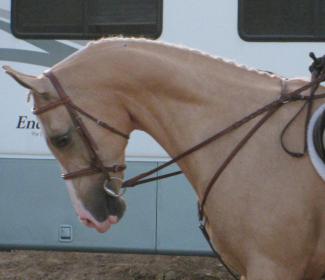A lot of the time I think that people fixate on the horses head position, but not the entire body. I have ridden with instructors where it was all about headset, headset, and headset. Or you have the rider that thinks it’s ok because they don’t know otherwise.
My PRE has a tendency to get behind the vertical. Part of it is his rounded neck conformation easily allows it, and the way he was previously ridden when he was started. He is also so light, so very light. Just a little bit of pressure can send him BTV in his plain ol’ mild snaffle bit.
What am I doing to fix it? Really ensuring that we are forward and have impulsion. I am also riding him a bit lower than usual to encourage him to stretch into the contact, work over his back, and build that top line. It has been working as I feel his back raise and swing and he seeks our contact. Sometimes he will default to BTV, and as I said, he is incredibly light and soft mouthed so I really have to pay attention.
I’m my case, and others, it can be a really sensitive mouthed horse who gets behind the leg sometimes. In additional to a slight battle of conformation that allows him to so easily be BTV. He just wants to default there with the slightest bit of pressure. So he is learning proper contact, reaching, stretching, and not evading.
The other part of the equation is people wanting to literally compact their horse into collection so they (as seen) end up cranking them inward. It is as though they want to pull them back onto their hind end. Or there is too much hand used in an effort to contain the “power” of the horse. I think it is not so uncommon for horse to go through a BTV phase in its training. Especially young or green horses. They will sit above, below, behind, in front of the contact as evasions or just trying to figure it all out. It is up to the rider to show the horse the way.



 I did not stick around for long!
I did not stick around for long!